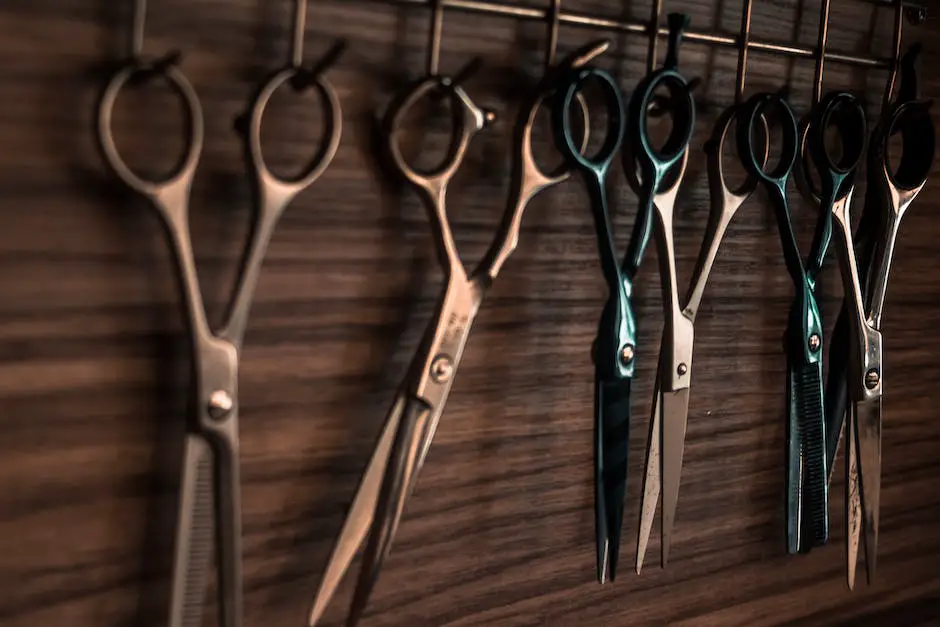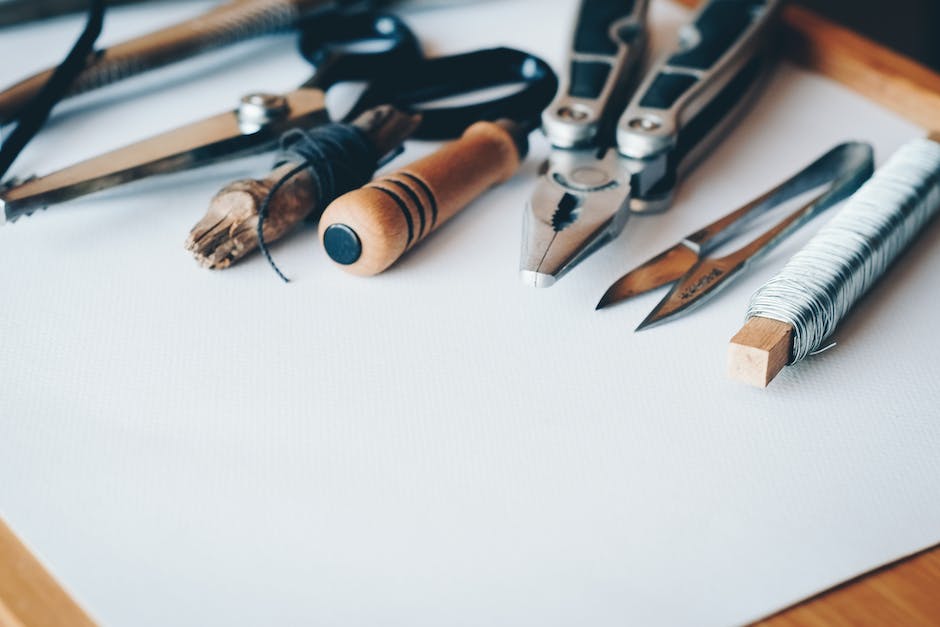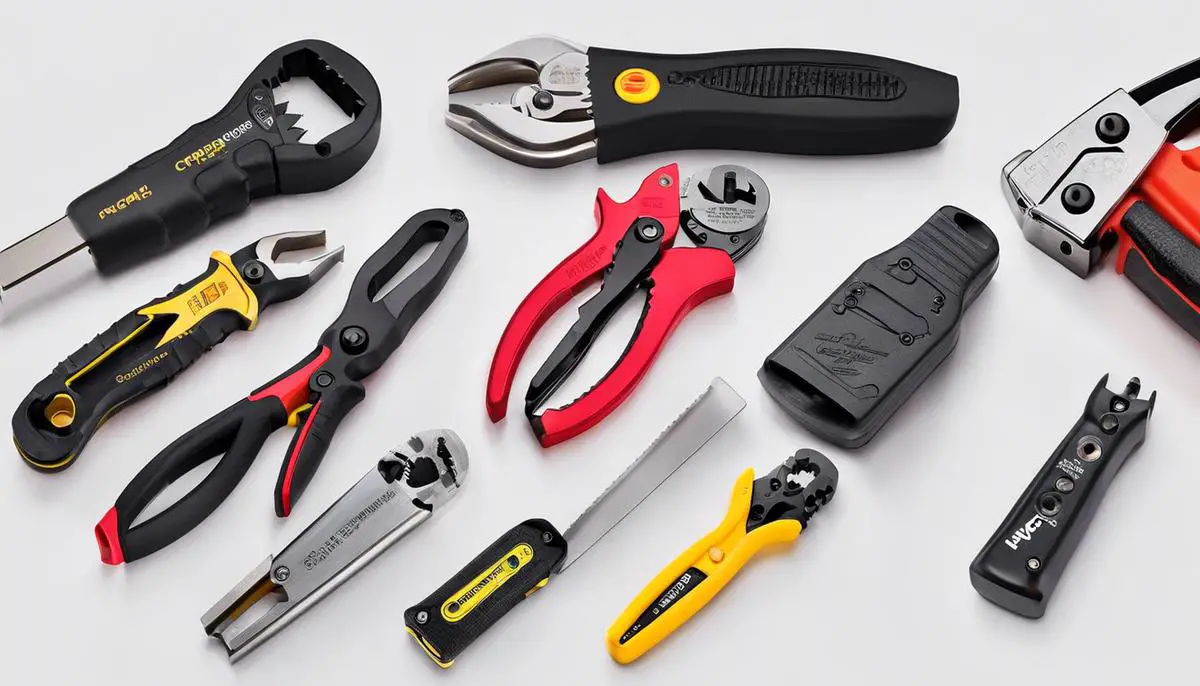From an array of intricate wiring tasks to a variety of crafting projects, crimping tools have become indispensable.
A fundamental asset for hobbyists who are eager to step up their game, these tools, when used correctly, can make a world of difference in carrying out projects efficiently.
This comprehensive guide is designed to help enthusiasts navigate the world of crimping tools – their various types, functionality, appropriate selection, and the pivotal maintenance steps to enhance their longevity.
Prepare to delve deeper into the world of crimping tools, ascertain which suits your projects best, and journey towards the mastery of this useful art.
Understanding Different Types of Crimping Tools
Ah, the humble crimping tool, the unsung hero of our toolbox! It’s time for us to delve deep into the world of this simple device with the capacity to literally shape our crafting experiences.
From beautiful jewelry to robust electrical fittings, these tools have vast applications. Let’s dig into the different types of crimping tools, and see what magic each one contributes to every enthusiast’s workshop.
First and foremost, our good friend the electrical crimping tool. This instrument specializes in forging solid connections between metal pieces, typically wires.
The tool compresses a connector or terminal onto a wire, creating a tight-fitting, highly conductive joint.
Essential for electronics or even household repairs, this type of crimping tool is a must for DIY enthusiasts.
Heated and hydraulic electrical crimpers are two popular variants, each with their own unique benefits in making secure electrical connections.
Hopping over from the practical to the intricate, we find jewelry crimping tools. These delightfully petite pliers crimp small ‘crimp beads’ to hold jewelry elements in place.
With a quiet squeeze, one can create stunning trinkets, from bracelets to necklaces. The two-part crimping process allows for precision and stability, ensuring your creations can withstand the hustle and bustle of everyday wear.
Let’s not forget the data crimping tool, the gatekeeper of connectivity. These tools are used to attach connectors to the ends of networking cables, such as those used for internet connections.
Cat5 and Cat6 connections don’t make themselves, friends, and these tools secure those critical connections.
Hair crimping tools call the beauty sector their home, bringing texture to hairstyles worldwide. A little pressure, some heat, and voila!
Instant volume and beachy waves or an 80’s glam rock look, in just a few moments. With differing sizes comes differing wave styles; it’s creativity at your fingertips!
Next up, we encounter the crimping tools in the floral arrangement sector. These tools play a pivotal role in preserving the integrity of wires used in floral crafts, creating tight seals in an aesthetically pleasing manner.
If you’re serious about floristry, securing a decent bunch of crimping tool options is a must.
And let’s not neglect hose crimping tools, boasting a pivotal role in hydraulic systems. These mechanisms effectively create a firm connection between the hose and the fitting. In different sizes and formats, these tools ensure leak-free and secure connections.
Lastly, the self-sealing weatherstripping crimping tool. Vital for those involved in automotive restorations, these tools work to securely fasten weatherstripping, offering an additional layer of protection to your precious vehicle.
And there you have it, folks! From creating cyber connectivity to stunning jewelry pieces, crimping tools range impressively in their application.
Each specialized type reflects the vastness of our creative and practical endeavors. Next time you reach for your crimping tool, take a second to appreciate just how integral this simple tool is to your hobby. Happy crimping!

How to Choose the Right Crimping Tool
The Essential Guide to Choosing the Ideal Crimping Tool for Your Project
Whether you’re a seasoned DIY enthusiast or a budding hobbyist, the crimping tool holds a vital position in your toolbox.
From intricate jewelry creations to robust hose assemblies, selecting the correct crimping tool is essential for project success.
Currently, you might find yourself intrigued by the variety and sophistication of crimping tools not yet covered, such as the fishing crimping tool, ferrule crimping tool, and the insulated terminal crimping tool, among others.
If you happen to be caught up in the exciting world of angling, the fishing crimping tool is your catch of the day!
A fabulous piece of equipment made for crimping fishing lines, it’s designed for securing hooks, leaders, and swivels.
These tools are often crafted from corrosion-resistant material, making them an optimum choice for water-based environments. Rest assured, this tool can “reel in” the perfection in your fishing hobby.
When it comes to bridging connections in electrical wires, turn your attention towards the ferrule crimping tool.
This unique, yet indispensable instrument aids in crimping wire ferrules – the small metal tubes used for securing the ends of multi-strand wires.
These tools eliminate the chances of loose connections, thus ensuring safe and effective transmission of electricity.
Remember, for liability assurance and to uphold quality, always select a ferrule crimping tool that adheres to the DIN46228 standard.
In the arena of heat shrink tubing or insulated terminals, the insulated terminal crimping tool steals the spotlight.
Promoting a clean and professional circumferential crimp, the insulated terminal crimping tool delivers a superior electrical connection without damaging the insulation.
Making the right choice for this tool involves verifying the crimp level, whether it may be single, dual, or quad crimps.
As you delve deeper into your hobby and your toolbox grows more vibrant, another key player to consider is the coax crimping tool.
This essential tool screams perfection for crimping coax connectors in data transmission equipment, radiofrequency applications, and television antennae.
Look for a design that accommodates multiple jaw sets for handling a variety of coax sizes, thus increasing the tool’s versatility.
Lastly, the possibilities with a crimping tool wouldn’t be complete without mentioning the bead crimping tool, a favorite in the jewelry-making sphere.
This gem specializes in securely fastening edgy crimp beads without causing distortion. When picking out a bead crimping tool, favor one that creates round, uniform crimps while preserving the bead’s integrity.
Choosing the right crimping tool certainly offers a satisfying exploration into the technicalities and benefits of each tool.
Always ensure to select a tool that aligns with your project’s requirements and carries a durable build for long-lasting performance.
Here’s to another step towards mastering your respective hobby, with the perfect crimping tool as your ally!

Maintaining and Caring for Your Crimping Tools
Crimping tools serve as the backbone of countless hobbyist projects and professional jobs. The longevity of these tools can ensure consistent and high-quality work output, not to mention saving from frequent replacements.
But reliable performance doesn’t occur by chance. Here are some excellent methods to maximize the lifespan of your crimping tools, regardless of their purpose.
Firstly, regular cleaning is fundamental. Like any tool, crimping tools can suffer from accumulated dust, dirt, and debris, which can interfere with their efficiency and potentially cause them harm.
A simple wipe down with a dry or slightly damp cloth after each use can work wonders. Going a step further, a periodic deeper clean with a suitable, usually alcohol-based solvent, can remove hard to reach or stubborn grime.
For more intricate designs, consider using a soft-bristle toothbrush. Always ensure your tool is completely dry before the next use to avoid corrosion.
Another crucial aspect of crimping tool care is proper storage. Moisture, temperature fluctuations, and accidental knocks can significantly impact the longevity of your tool.
Therefore, store them in a dry, consistent-temperature location out of direct sunlight. When possible, use protective casing or designated toolboxes to guard against physical damage.
It’s also essential to use the right method with your crimping tool. Avoid overloading or abusing the tool by using it for tasks beyond its ability.
For example, using a fishing crimp tool to crimp a ferrule can result in damage. By sticking to the intended use, you can prevent unnecessary wear and tear, ensuring longevity.
Sharpening or replacing worn-out crimping dies is another critical way to maintain the tool’s efficiency.
If you notice that the crimps aren’t as clean or secure, it might point to a dulling or damaged die.
Also, keep an eye out for rust or erosion in the dies as these can affect the effectiveness of your crimps and potentially harm the tool.
Routine inspection can catch subtle signs of damage in a crimping tool. Look out for any slight bends or cracks in the tool body, issues with the grip, or any general wear and tear.
Catching these things early can help mitigate bigger problems down the line. When necessary, don’t hesitate to seek professional repair or consider a replacement if the tool has reached the end of its usable life to maintain the quality of your work.
Lubrication is the final stop in our maintenance journey. Crimping tools, especially those with moving parts, need regular lubrication.
This forms a protective barrier against rust while reducing friction—resulting in smoother operation and a longer lifespan.
In the end, it’s worth remembering that keeping crimping tools at their best is a continuous and conscious effort.
But don’t worry, it soon becomes second nature. Your reward will be tools that last longer and perform better, helping you to create the best possible work. Don’t we all want that?
A well-chosen, meticulously maintained crimping tool can be the game-changer in any project. By understanding the intricacies of different crimping tools, learning to pick the right one based on the nature of the project, and knowing proper maintenance practices, hobbyists can achieve optimal results and increased longevity of their tools.
The journey of learning and utilizing this knowledge can significantly enhance one’s skill as a hobbyist, taking their pursuit far beyond their wildest dreams.
The takeaway is simple – understanding your tools is just as crucial as mastering your craft – in both, lies the true joy of creating.


